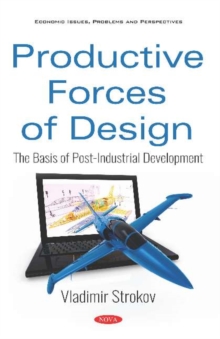A new economy is being considered, in which economic activity of society and a set of relations are taking shape not only at the stages of production, distribution, exchange and consumption, but also at the design stage, forming the basis of post-industrial development.
The goals of post-industrial development have been formulated: design and production of complex high-tech varieties of types of products satisfying the strategic needs of the country (being the country's wealth).
There are functional and parametric varieties. Functional varieties differ in the number of consumer functions (properties), for example, the first stage of the Falcon 9 rocket launches the vehicle, returns to the launch site and lands on the platform.
Parametric varieties have different parameters of the same consumer functions, for example, the varieties of aircraft "Airbus" A380 and A381 differ in the number of seats (180 and 236) and flight range (6100 km and 5900 km).
Varieties may have a program management by satisfaction of needs, replacing a person, for example, the first stage of the Falcon 9 rocket has this program management.
For the first time in the world practice, the decisive role of the productive forces of computer-aided design in fulfilling the goals of post-industrial development has been shown.
The productive forces of computer design: the aggregate of designers (constructors, analysts, technologists) and computer means of design are capable of a) designing digital models of intermediate (parts, units, assemblies) and final products, b) analysing and modelling structures, c) carrying out technological preparation of production, d) designing composite materials with the required parameters of consumer functions.
Computerization of design leads to an instantaneous exchange of information and replacement of tons of design documentation with a single flash disk and creates the possibility of designing varieties of products with program management (without human participation) of satisfaction of the needs (age-old dream of humanity).
The use of composites provides the possibility of designing varieties of items being intellectual property carriers, which meet the required parameters.
The principles of the organization of the computer-aided design process (universalization, parallelism, optimization, innovations, and continuity) have been introduced and substantiated.
The productive forces of computer-aided design changed the productive forces of the production of the K.
Marx's model: universal machines replaced specialised machines; software control of the machine, developed by a technologist, caused the replacement of the worker.
The organization of the production process of intermediate and simple products in time has been developed.
Universalisation, innovations, optimization of design and production lead to the international division of mental labour and production capital of individual countries and regions into the design of stages and varieties and the production of varieties of intermediate products, carriers of intellectual labour property with the required consumer functions and their parameters.
Universalisation, innovations, optimisation of design and production lead to the international per-stage and per-object division of the designer's mental labour and per-object division of the productive capital of individual countries and regions.
The result is the design and production of varieties of intermediate products, carriers of intellectual labour property, having the required consumer functions and parameters.
International cooperation of design organisations and enterprises of individual countries and regions based on the principles of parallelism and continuity leads to the formation of families of international design and production.
The families are able to produce parametric and functional-parametric varieties of types of final products, carriers of intellectual labour property, satisfying functional and parametric requirements.
The competition between families determines the development of the world industry.
For example, the competition between the families of "The Boeing Company" and "Airbus SE" determines the development of civil aviation in the world.
The production costs have been determined. A mechanism has been developed for the development of the productive forces of design and production through the renewal of intellectual property in the design process and the accumulation of capital in the production process.

